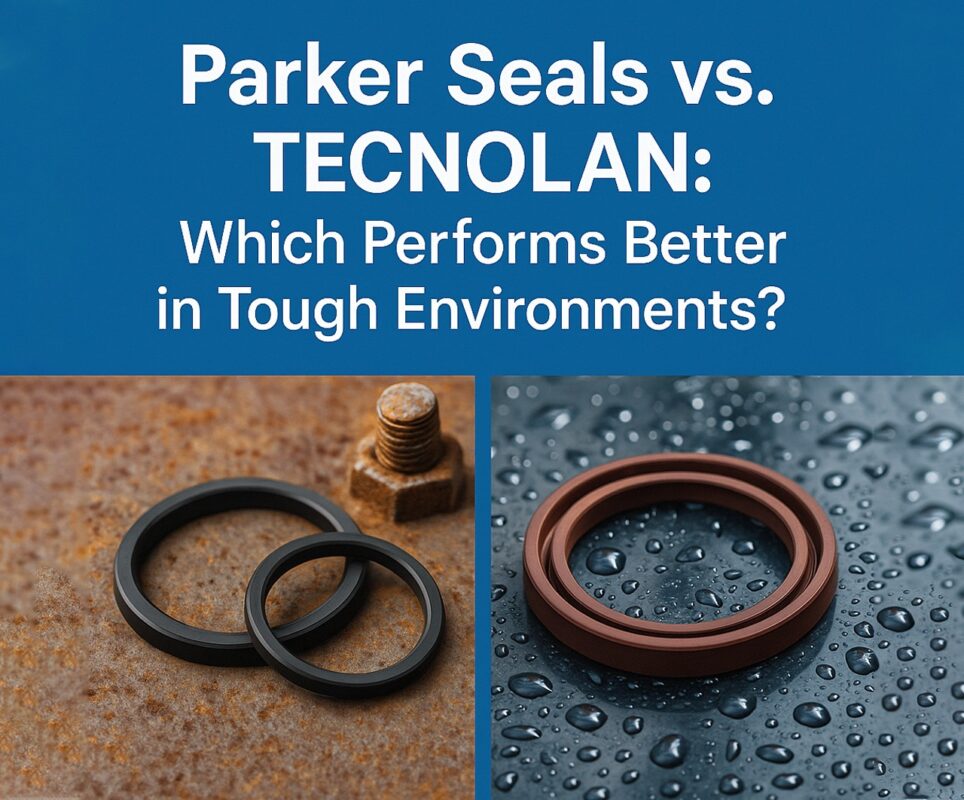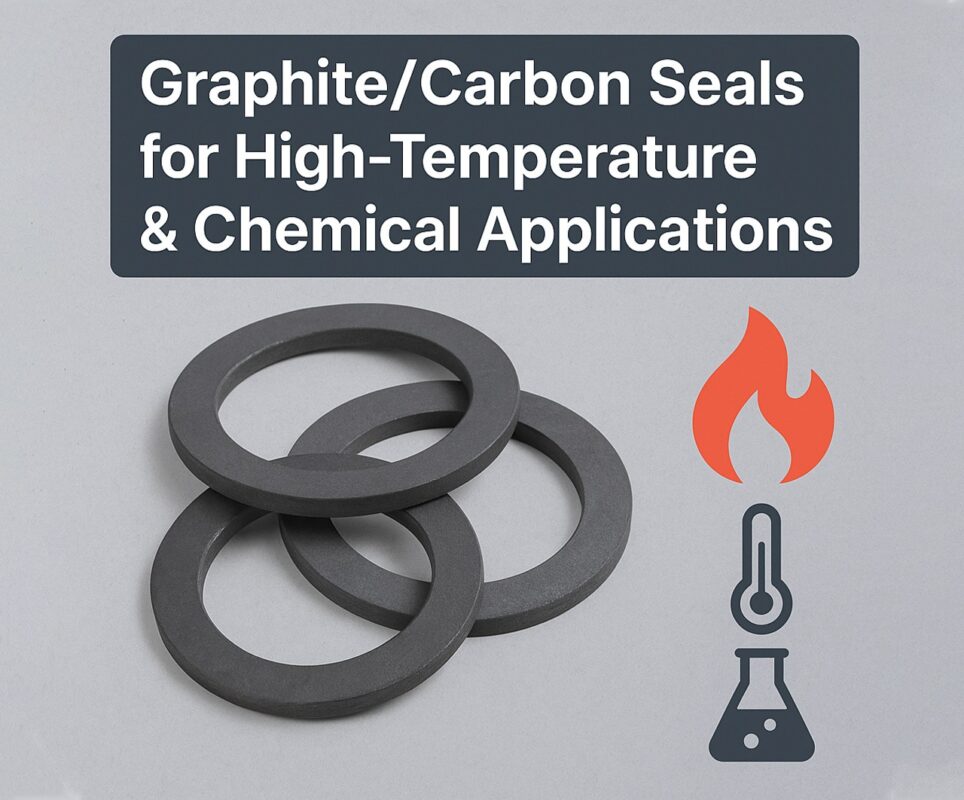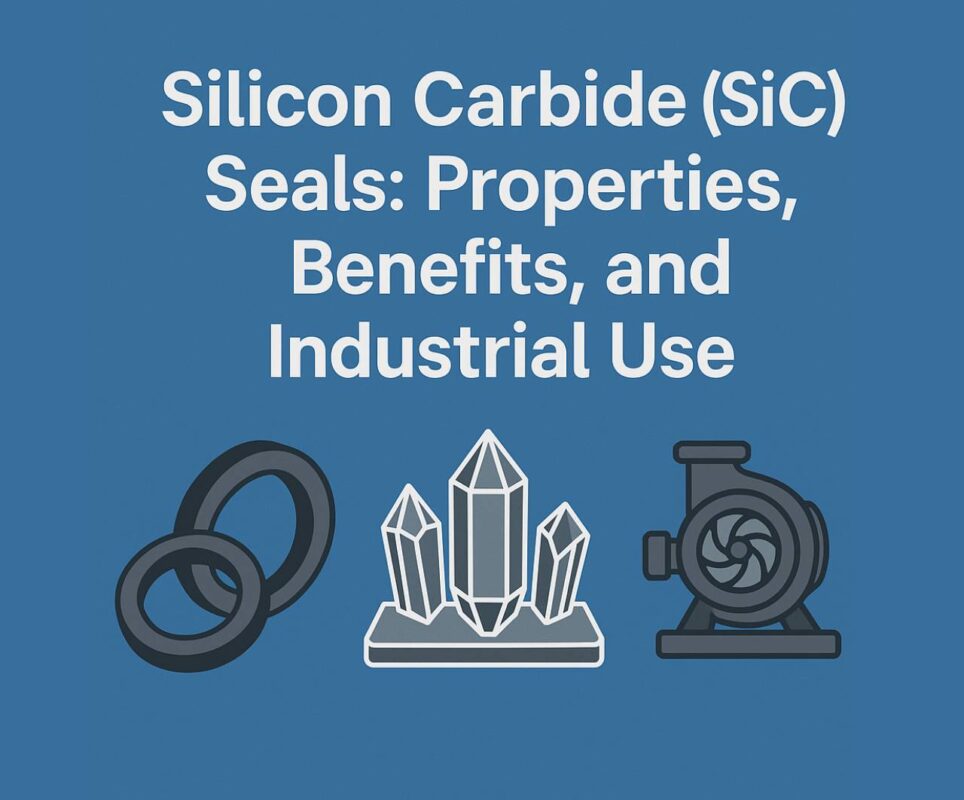In the world of ultra-clean, high-precision manufacturing, reliable sealing solutions are a must. Whether it’s managing microscopic tolerances in wafer processing or ensuring sanitary conditions in drug production, sealing technologies play a critical role. Enter ring sealer, sealing ring, and ring sealing solutions made from PTFE (polytetrafluoroethylene). PTFE’s unmatched chemical resistance, low friction, and thermal stability have made it a staple in applications where failure simply isn’t an option.
This article explores how PTFE sealing rings function, their unique properties, and their critical applications in the semiconductor and pharmaceutical industries. Know more..
Why PTFE?
PTFE, often recognized by the brand name Teflon™, is a fluoropolymer known for:
- High chemical resistance (acids, bases, solvents)
- Extreme temperature tolerance (-200°C to +260°C)
- Non-stick, low-friction surface
- Biocompatibility and FDA compliance
- Excellent electrical insulation properties
These properties make PTFE the material of choice for ring sealer and sealing ring applications in sensitive environments like cleanrooms, sterile processing lines, and vacuum chambers.
PTFE’s ability to resist both physical and chemical attack makes it particularly useful in maintaining product purity and system longevity—two critical factors in the semiconductor and pharmaceutical sectors.
PTFE in Semiconductor Manufacturing
1. Plasma Etching Chambers
PTFE sealing rings are used in plasma etching to resist corrosive gases like CF4, Cl2, or SF6. A ring sealer in this context must withstand:
- High vacuum conditions
- Ionized particle bombardment
- Constant thermal cycling
Its ability to endure repeated plasma exposure without degradation helps ensure equipment uptime and process consistency.
2. Chemical Mechanical Polishing (CMP)
In CMP systems, PTFE sealing ring components prevent slurry leakage and contamination between wafer stages. Their low friction ensures uniform polishing pressure.
PTFE’s anti-stick surface also minimizes residue build-up, reducing maintenance intervals and maintaining surface finish quality.
3. Deposition Equipment
CVD and PVD tools often rely on ring sealing components to isolate process gases from the chamber atmosphere. PTFE excels because it doesn’t degrade or off-gas under vacuum.
This makes it ideal for environments where even the smallest contamination can ruin an entire production run.
PTFE in Pharmaceutical Manufacturing
1. Aseptic Processing
PTFE sealing ring components are used in sterile fluid paths, isolators, and clean-in-place (CIP) systems. They must endure steam sterilization and aggressive cleaning agents.
Unlike elastomers, PTFE does not absorb cleaning fluids or harbor microbes, making it inherently more hygienic.
2. Tablet Presses and Fill-Finish Lines
Precision sealing is essential to maintain dose accuracy and prevent microbial ingress. Ring sealer configurations in these systems need to be inert and easy to sanitize.
PTFE’s dimensional stability ensures sealing consistency even during long production shifts involving frequent pressure changes.
3. Bioreactors and Fermentation Tanks
PTFE ring sealing ensures biocompatibility and avoids contamination of cell cultures or active pharmaceutical ingredients (APIs).
Because PTFE does not break down or leach under harsh bioprocessing conditions, it’s the go-to material in sensitive pharmaceutical setups.
Advantages of PTFE Sealing Rings
| Feature | Benefit |
| Chemical Inertness | Compatible with all solvents and reagents |
| Low Friction | Reduces wear, improves equipment life |
| Thermal Stability | Operates in autoclaves and thermal chambers |
| Cleanroom Suitability | Non-outgassing, low particulate shedding |
| Biocompatibility | Approved for food and pharma use (FDA, USP VI) |
| Non-aging Characteristics | Excellent long-term sealing performance |
| Non-reactivity | Safe for use with sensitive compounds |
Unlike rubber or silicone, PTFE does not swell, degrade, or leach under demanding conditions—making it the superior ring sealing material for critical processes.
Types of PTFE Sealing Rings
- Pure PTFE Rings Best for chemical resistance but limited in elasticity. Commonly used in static ring sealer applications.
- PTFE with Elastomer Core Offers better recovery and dynamic sealing. Ideal for pharmaceutical vial filling where frequent movement occurs.
- Glass-Filled PTFE Enhanced strength and creep resistance. Useful in high-pressure CMP and pump systems.
- Carbon-Graphite Filled PTFE Low friction, suitable for dry running surfaces and ring sealing under vacuum.
- PTFE Envelope Gaskets Combination of PTFE and rubber for flanged joints in sterile systems.
- Spring-Energized PTFE Seals Feature a metal spring for dynamic sealing, commonly used in rotary shafts and reciprocating applications.
Considerations When Choosing PTFE Ring Sealers
- Compression Set Resistance: Will it rebound after CIP/SIP cycles?
- Media Compatibility: Will it survive exposure to peracetic acid or hydrogen peroxide?
- Installation Requirements: Can the sealing ring be easily installed or must it be machined in place?
- Surface Finish: Cleanroom-ready components require ultra-smooth sealing surfaces.
- Regulatory Compliance: Must meet FDA, USP Class VI, and possibly ISO 10993.
- Cycle Frequency: Higher motion frequency may require spring-energized or elastomer-supported PTFE variants.
Maintenance and Inspection in Critical Environments
- Visual Checks Look for flattening, discoloration, or chemical attack.
- Leak Testing Use helium mass spectrometry or bubble testing in vacuum systems.
- Documentation Track each ring sealer by batch for traceability.
- Scheduled Replacement Don’t wait for failure. Replace seals proactively during shutdowns.
- Cleanroom Protocols Use lint-free gloves and sterile packaging to handle sealing ring components.
- Sterilization Logs Keep track of autoclave or SIP cycles to monitor long-term exposure stress on seals.
Real-World Success Story: Semiconductor Fab Upgrade
A major semiconductor manufacturer upgraded from elastomer O-rings to PTFE ring sealing components in its wafer polishing tools. The result?
- Downtime reduced by 60%
- Seal replacement interval increased from 2 weeks to 3 months
- Fewer contamination incidents in Class 1 cleanroom
By switching to a combination of glass-filled PTFE and spring-energized designs, the fab increased both yield and seal performance.
Future of PTFE in Precision Sealing
- Modified PTFE Compounds Enhance elasticity and creep resistance.
- Laser-Machined Sealing Rings Enable custom geometries for tight clearances.
- Embedded RFID Tags Track lifecycle data and batch information.
- ybrid Seals with Smart Materials React to temperature or pressure changes dynamically.
- Sustainable Manufacturing PTFE recycling and low-emission production methods.
- AI-Integrated Seal Monitoring Sensors embedded within seals may soon connect to IIoT systems for real-time wear and performance tracking.
Final Thoughts: The Unseen Hero of Clean Production
In semiconductor fabs and pharmaceutical plants, the smallest parts often have the biggest jobs. A single ring sealer or sealing ring made of PTFE can protect millions of dollars’ worth of product from contamination, loss, or failure. In high-purity, high-performance environments, nothing less than precision-engineered ring sealing solutions will do.
As production technologies evolve, so too will the demands on materials. PTFE continues to meet and exceed those demands—quietly enabling cleaner, faster, and safer manufacturing processes worldwide.
If your application demands the best in chemical resistance, thermal tolerance, and cleanliness, it’s time to give PTFE sealing rings the attention they’ve earned. Investing in the right sealing solution today could mean uninterrupted production, lower maintenance costs, and greater regulatory confidence tomorrow.






